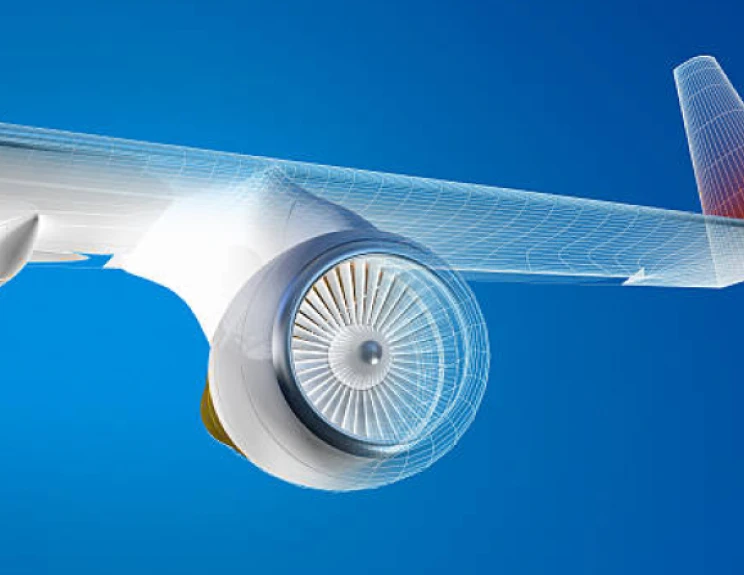 AI has become a key indicator of competitive advantage for businesses. While adoption is increasingly widespread, a clear divide has formed between organizations leading with advanced AI maturity and those still in the early stages of exploration. High-maturity businesses - often recognized as AI leaders - are effectively scaling AI across functions and realizing substantial business value. In contrast, many organizations remain in experimental phases and struggle to unlock tangible impact. Yet, regardless of where a company falls on the AI maturity level, common challenges remain, from data quality, talent shortages, and integration complexity.
AI has become a key indicator of competitive advantage for businesses. While adoption is increasingly widespread, a clear divide has formed between organizations leading with advanced AI maturity and those still in the early stages of exploration. High-maturity businesses - often recognized as AI leaders - are effectively scaling AI across functions and realizing substantial business value. In contrast, many organizations remain in experimental phases and struggle to unlock tangible impact. Yet, regardless of where a company falls on the AI maturity level, common challenges remain, from data quality, talent shortages, and integration complexity. Businesses with high AI maturity - What sets them apart?
Higher investments, more tangible benefits
Organizations with high AI maturity demonstrate a more extensive approach to AI integration, with measurable impacts on measurable business benefits. High-maturity organizations commit significant resources to AI. Specifically, they make twice the investment in digital, twice the people allocation, and twice the number of AI solutions scaled. These investments pay off, as IDC reported that leading generative AI users see a 10x ROI, far higher than the 3.7x average for all users.
Combining talent, leadership, and AI in core operations
Importantly, success in AI is not just about spending more. High-performing organizations understand that achieving real value from AI requires aligning technology with business goals, cultivating the right talent, and embedding AI into everyday operations. This broader vision is often achieved by senior leadership, who view AI as a critical enabler of long-term competitive advantage. Indeed, Gartner’s 2025 survey revealed that 91% of high-maturity organizations have established dedicated AI leadership roles. These leaders don’t work in isolation - they actively integrate AI into core business areas such as operations, sales, and R&D, where 62% of AI’s value is realized. In another research by IDC, AI thrivers are 3 times more likely to have a change management program that drives companywide transformation by focusing on how employees engage with new agentic workflows as part of a broader, communicated business strategy.
A strong emphasis on responsible AI and governance
Implementing AI alone is not enough. For high-maturity AI organizations, they have also established clear responsibilities, governance frameworks, and ethical standards to guide their use. By embedding accountability and transparency into AI development and deployment, these organizations create systems that are effective and aligned with their values and societal expectations. According to the IDC MaturityScape Benchmark AI Survey 2025, AI thrivers are 4 times more likely to have an AI Governance framework that is aligned to their AI strategy with standards and practices for managing AI models, data, and security throughout the enterprise. More mature enterprises have a unified AI governance model that distributes governance to the business by building controls into business operations. Rather than just layering AI onto existing workflows, they actively redesign business processes to fully harness AI’s potential for long-term value creation.
Low AI maturity businesses - AI is still in the experimentation phase

Unlike high-maturity organizations, businesses with low AI maturity are still in the early phases of adoption, mainly focusing on experimenting rather than implementing AI at scale or generating substantial value. According to Accenture, 63% of organizations worldwide are "AI Experimenters" who are only beginning to explore AI and have yet to realize its full potential. Specifically, only 20% of low-maturity organizations maintain AI projects that last three years or more, far fewer than high-maturity organizations.
Organizations with low AI maturity, especially in sectors like banking and insurance, struggle to capture strategic values due to weak governance and lack of trust in AI. According to a McKinsey survey, common issues such as inaccuracies, cybersecurity breaches, and IP violations frequently stem from inadequate oversight. As agentic AI introduces more autonomy and complexity, the associated risks become even more significant. Yet, only 28% of CEOs report direct involvement in AI governance, which calls for stronger executive accountability and robust oversight frameworks before scaling AI across the enterprise.
Furthermore, their AI initiatives often focus on short-term productivity improvements rather than core business transformation. This means, these companies tend to view AI as a tool for operational efficiency, with limited emphasis on innovation or strategic differentiation. Low-maturity organizations also struggle to move from experimentation to enterprise-level implementation, as IDC research revealed that out of 23 generative AI proof-of-concepts (POCs) tested, only 3 reached production.
Common barriers in AI implementation
 Despite the difference in AI maturity levels, both high- and low-maturity organizations share several common barriers to successful AI implementation. One of the most prominent concerns is data availability or quality, cited as a top-three barrier by 29% of high-maturity respondents and 34% of low-maturity respondents. This data obstacle calls for the universal importance of clean, accessible, and well-structured data as a requirement for effective AI deployment. In the same research by Gartner, deploying and operationalizing AI appears as a challenge in both groups (22% for high maturity and 19% for low maturity), suggesting that even advanced organizations encounter difficulties in moving from proof-of-concept to scalable, production-ready AI systems.
Despite the difference in AI maturity levels, both high- and low-maturity organizations share several common barriers to successful AI implementation. One of the most prominent concerns is data availability or quality, cited as a top-three barrier by 29% of high-maturity respondents and 34% of low-maturity respondents. This data obstacle calls for the universal importance of clean, accessible, and well-structured data as a requirement for effective AI deployment. In the same research by Gartner, deploying and operationalizing AI appears as a challenge in both groups (22% for high maturity and 19% for low maturity), suggesting that even advanced organizations encounter difficulties in moving from proof-of-concept to scalable, production-ready AI systems.
Despite early efforts to regulate AI adoption and secure the necessary talents (two areas that show lower maturity across organizations), these challenges are estimated to escalate as companies grow. If organizations fail to expand their talent pool, they might risk losing opportunities, slower innovation, and lower market competitiveness. Another barrier to AI adoption is legacy infrastructure - a challenge particularly prevalent among less mature companies. These outdated systems often lack the flexibility, processing power, and integration capabilities required to support modern AI technologies.
FPT – Your trusted partner to overcome AI challenges
Regardless of where an organization stands on the AI maturity levels, enterprises need a trusted partner to accelerate progress and overcome critical challenges. FPT’s expansive global partner network, including industry giants such as NVIDIA, Mila Institute, and LandingAI, empowers businesses to accelerate their AI transformation journey with confidence and scale. As a founding member of the AI Alliance (co-established by IBM and Meta) and the Ethical AI Committee in Vietnam, FPT is committed to promoting open innovation, ethical governance, and collaborative development across all facets of AI. With a robust pool of over 1,000 AI experts, FPT empowers businesses to bridge critical talent gaps by providing access to industry knowledge, deep domain expertise, and a scalable best-shore model (including onshore, nearshore, offshore) to execute complex AI projects.To further cement its position in AI, FPT announced a strategic partnership with NVIDIA to deliver a comprehensive AI & Cloud ecosystem. This includes cutting-edge AI products, GPU infrastructure, domain-specific expertise, and a unified platform accessible across all regions where FPT operates. Recently, FPT’s AI Factory was ranked as one of the world’s fastest commercial supercomputers. Ranked 36th and 38th globally in the June 2025 TOP500 list, FPT’s AI Factories in Japan and Vietnam utilize NVIDIA H200 Tensor Core GPUs (SXM5), making FPT the #1 commercial AI cloud provider in Japan. Established on the philosophy of “Build Your Own AI”, these factories democratize access to high-performance computing, bridging the gap between potential and application across industries and everyday life.






























